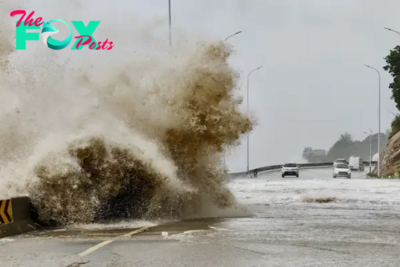Technology
Tagging seals with sensors helps scientists track ocean currents and a changing climate
A surprising technique has helped scientists observe how Earth’s oceans are changing, and it’s not using specialized robots or artificial intelligence. It’s tagging seals.
Several species of seals live around and on Antarctica and regularly dive more than 100 meters in search of their next meal. These seals are experts at swimming through the vigorous ocean currents that make up the Southern Ocean. Their tolerance for deep waters and ability to navigate rough currents make these adventurous creatures the perfect research assistants to help oceanographers like my colleagues and me study the Southern Ocean.
Seal sensors
Researchers have been attaching tags to the foreheads of seals for the past two decades to collect data in remote and inaccessible regions. A researcher tags the seal during mating season, when the marine mammal comes to shore to rest, and the tag remains attached to the seal for a year.
A researcher glues the tag to the seal’s head – tagging seals does not affect their behavior. The tag detaches after the seal molts and sheds its fur for a new coat each year.
The tag collects data while the seal dives and transmits its location and the scientific data back to researchers via satellite when the seal surfaces for air.

First proposed in 2003, seal tagging has grown into an international collaboration with rigorous sensor accuracy standards and broad data sharing. Advances in satellite technology now allow scientists to have near-instant access to the data collected by a seal.
New scientific discoveries aided by seals
The tags attached to seals typically carry pressure, temperature and salinity sensors, all properties used to assess the ocean’s rising temperatures and changing currents. The sensors also often contain chlorophyll fluorometers, which can provide data about the water’s phytoplankton concentration.

Phytoplankton are tiny organisms that form the base of the oceanic food web. Their presence often means that animals such as fish and seals are around.
The seal sensors can also tell researchers about the effects of climate change around Antarctica. Approximately 150 billion tons of ice melts from Antarctica every year, contributing to global sea-level rise. This melting is driven by warm water carried to the ice shelves by oceanic currents.
With the data collected by seals, oceanographers have described some of the physical pathways this warm water travels to reach ice shelves and how currents transport the resulting melted ice away from glaciers.
Seals regularly dive under sea ice and near glacier ice shelves. These regions are challenging, and can even be dangerous, to sample with traditional oceanographic methods.

Across the open Southern Ocean, away from the Antarctic coast, seal data has also shed light on another pathway causing ocean warming. Excess heat from the atmosphere moves from the ocean surface, which is in contact with the atmosphere, down to the interior ocean in highly localized regions. In these areas, heat moves into the deep ocean, where it can’t be dissipated out through the atmosphere.
The ocean stores most of the heat energy put into the atmosphere from human activity. So, understanding how this heat moves around helps researchers monitor oceans around the globe.
Seal behavior shaped by ocean physics
The seal data also provides marine biologists with information about the seals themselves. Scientists can determine where seals look for food. Some regions, called fronts, are hot spots for elephant seals to hunt for food.
In fronts, the ocean’s circulation creates turbulence and mixes water in a way that brings nutrients up to the ocean’s surface, where phytoplankton can use them. As a result, fronts can have phytoplankton blooms, which attract fish and seals.

Scientists use the tag data to see how seals are adapting to a changing climate and warming ocean. In the short term, seals may benefit from more ice melt around the Antarctic continent, as they tend to find more food in coastal areas with holes in the ice. Rising subsurface ocean temperatures, however, may change where their prey is and ultimately threaten seals’ ability to thrive.
Seals have helped scientists understand and observe some of the most remote regions on Earth. On a changing planet, seal tag data will continue to provide observations of their ocean environment, which has vital implications for the rest of Earth’s climate system.
-

 Technology2h ago
Technology2h agoClimate change fuels extreme rainfall and stronger typhoons
-

 Technology7h ago
Technology7h agoChina invests $13.8 billion to propel integrated circuits, biomedicine, and AI
-

 Technology7h ago
Technology7h agoNew taxes on mobile phones set to drive prices higher in Pakistan
-

 Technology10h ago
Technology10h agoSending 'touch' over the internet could soon be as easy as sending a video with new haptic file format
-

 Technology14h ago
Technology14h agoIndian shares rebound led by IT sector after five-session decline
-

 Technology14h ago
Technology14h agoFAA clears SpaceX's Falcon 9 for space return
-

 Technology20h ago
Technology20h agoReason behind social media slowdown in Pakistan revealed
-

 Technology20h ago
Technology20h agoChinese scientists detect universe's highest energy gamma-ray line





















